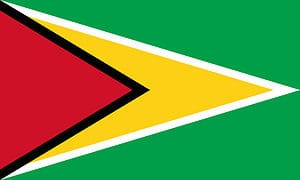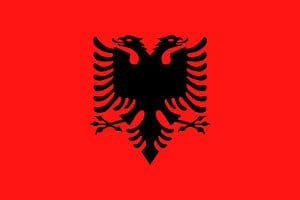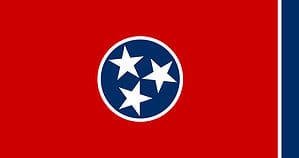Vanuatu is a South Pacific island nation located east of Australia and north of New Zealand. Even though it’s an archipelago consisting of 83 islands, it only has a population of approximately 300,000.
Since gaining independence from France and the United Kingdom in 1980, Vanuatu has become a member of the United Nations, the Commonwealth of Nations, and the Pacific Islands Forum.
In this article, we will explore the history, meaning, and symbolism of the flag of Vanuatu, along with some interesting facts about its design.
The History of the Flag of Vanuatu
The current national flag of Vanuatu was first hoisted on July 30, 1980, to mark the country’s independence from joint British-French colonial rule. The original design of the flag came about through a competition organized by the Vanuatu Cultural Center. Even though the contest received more than 200 entries, the design by local student, Kalontas Malon, won.
Malon’s flag design consisted of a background of two equal horizontal bands of red and green, with a black isosceles triangle alluding to the letter “V” in the middle.
Inside the black triangle is a representation of a yellow boar’s tusk encircling two crossed namele (Cycas seemannii) fern fronds, which are local symbols of peace. The boar’s tusk is also a symbol of prosperity for the ni-Vanuatu people.
Where Did the Idea for the Vanuatu Flag Originate?
When the Vanuatu Culture Center opened the contest for a new national flag design, Kalontas Malon wanted to create a concept that embodied the island nation. He started by pulling ideas from the islands that made up Vanuatu and crafted a design that incorporated colors and symbols to represent the island, its natives, and the country’s future prospects.
Kalontas Malon’s design has had very few alterations since he introduced the idea in 1980.
What Does the Flag of Vanuatu Symbolize?
The Flag of Vanuatu features green, red, and black horizontal bands with yellow fimbriations. The green represents the islands’ richness, the red symbolizes the blood that unites humanity, and the black represents the ni-Vanuatu people.
The Prime Minister of Vanuatu added yellow and black fimbriations to emphasize the black color. The Y-shape in yellow represents the country’s shape on the map and the light of the gospel spreading through the islands.
The emblem in the black band is a boar’s tusk, a symbol of customs, tradition, and prosperity, along with two leaves of the local namele tree symbolizing peace, with 39 leaflets representing the original members of the Parliament of Vanuatu.

In Vanuatu, the name of the cycad (
Cycas seemannii) is
nameleand is an important symbol of traditional culture.
©deror_avi, CC BY-SA 3.0 <https://creativecommons.org/licenses/by-sa/3.0>, via Wikimedia Commons – License
Did Vanuatu Ever Have Other Official Flags?
Before gaining independence in 1980, France and the United Kingdom jointly ruled over Vanuatu. During this time, there were no official flags for the country, but both colonial powers used their own flags on the islands. The French used their national flag, while the British used a colonial flag that featured the Union Jack in the canton and a green and yellow field.
Before the adoption of the current national flag of Vanuatu, various flags were used to represent the New Hebrides, which is now Vanuatu. In 1963, during the first South Pacific Games, a team from the New Hebrides displayed a flag consisting of blue-yellow-white vertical stripes with a central emblem.
Political parties also developed their flags with the traditional colors of Melanesia — red, black, and green. However, it wasn’t until the country gained independence in 1980 that the first official flag was adopted.
Interesting Facts about the Flag of Vanuatu
Even though the flag of Vanuatu is less than 50 years ago, it has a wonderful history and symbolism for the island nation’s people. Here are a few interesting facts and information about the nation’s banner:
- The unique Y-shape featured on the flag represents how the islands look together on a map.
- When Kalontas Malon crafted the flag, he included the boar’s horn to incorporate the traditions and customs of island natives.
- The flag is sometimes referred to as the “Yumi flag,” which means “you and me” in Bislama, the official language of Vanuatu.
The photo featured at the top of this post is © iStock.com/EA
Thank you for reading! Have some feedback for us? Contact the AZ Animals editorial team.







